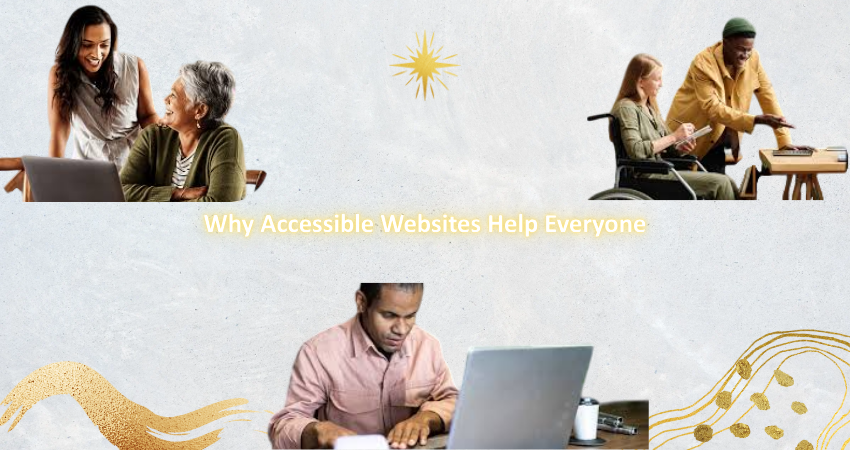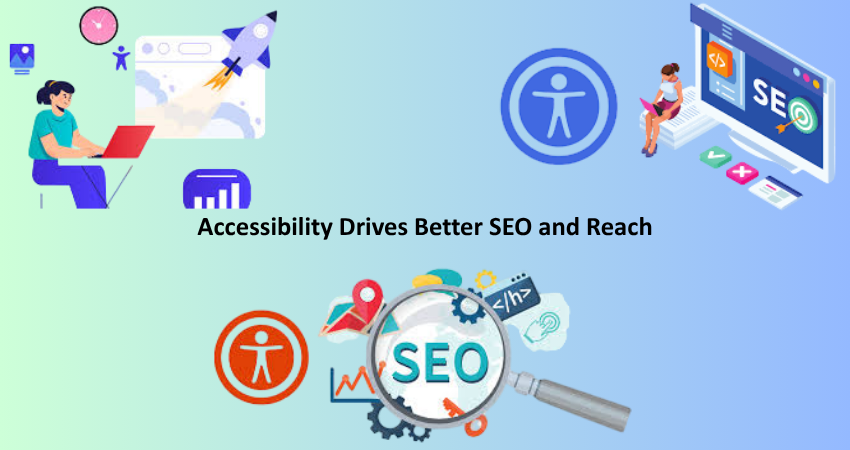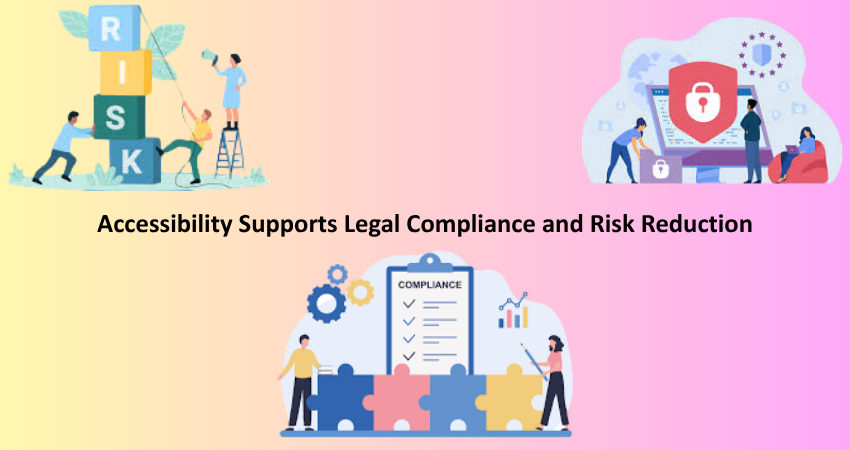
Introduction
Websites have become, in the digital age, the main gateway through which people access information, services, and opportunities. Many sites, however, continue to remain inaccessible to persons with disabilities, barring them from participation in online communities and commerce. Web accessibility, therefore, means practicing designing the websites in such a manner that every person—including able-bodied and disabled—can use it. Web design accessibility can be seen as part of legal obligations or part of ethical obligations, and once again, the far-reaching advantages of accessible web design spill over to the entire spectrum of users, not just the users with disabilities.
Website accessibility means that it must have provisions for every user’s need and not just visual, auditory, physical, speech, cognitive, or neurological effects. It must have alternative text for images, a proper use of headings, keyboard navigation, and sufficient contrast ratios. It has beyond compliance or even inclusionism. In reality, it is better usability for everyone-SEO, performance, customer reach, and innovation, among the benefits. This article outlines what all accessible websites offer to the user and not just to those with disabilities. It is a fixed concern for the web developer and for business owners as well.
Accessibility Improves Usability for Everyone
Enhancing Navigation and Content Clarity
This is what an accessible website is about: clear structure, easy navigation, and a consistent layout. These rules of good design serve to enhance usability not only for users with disabilities but also for those who do not have any impairment. Every aspect of the site is required to be accessible via navigational modality through a keyboard. This is useful to power users and developers and, indeed, to anyone who prefers keyboard shortcuts to mouse clicks. This is similar to well-structured content, with descriptive headings and semantic HTML tags, which give all users a chance to easily scan pages and find quickly relevant information.
Imagine a user with low bandwidth accessing a website on a mobile phone. An accessible design avoids unnecessary animations, heavy pictures, and complex layouts, and those add up to taking the page faster and easier to interact with. Text alternatives and captions make it a lot easier for all users in the loud environment or where sound cannot be played to understand things better. Therefore, accessibility enhances user experience by making web content more adaptable to different circumstances, devices, and preferences.
Accommodating Temporary and Situational Disabilities
Accessibility features such as screen viewers and magnifiers help people with temporary disabilities, such as a broken arm, or those who have situational limitations, such as trying to browse in bright sunlight or quietly in a library. These very users benefit from the same design features intended to support those permanently disabled. Voice control features, for example, may be helpful to someone whose hands are too full to operate a device; high-contrast text would serve a user trying to read on a screen in direct sunlight.
Design to accessibility, and you add flexibility and forgiveness to the interface for the user. One can even bet that all types of users would appreciate a website that allows all these: font size adjustment, color scheme toggling, and frozen moving content. Such features are in themselves more relaxing and reduce cognitive load. An accessible site does not bring benefits touting only the users with impairments. Instead, everyone would have the advantage of making his or her activities more accessible and comfortable in the different real-life situations.
Accessibility Drives Better SEO and Reach

Semantic HTML and Search Engine Discoverability
Web design means nothing until it is made accessible. One of the main principles holding accessible design together is the proper use of semantic HTML elements: this means heading elements ordered from <h1> to <h6>, form inputs labeled properly for checking by screen readers, and links containing descriptive anchor text. These provide meaning and context, enabling users to navigate around content more easily. And search engines really love this layout as well! Clear semantic markup gives search engines the ability to address the hierarchy and relevance of the content, which helps index and rank it appropriately.
Some of the basic accessibility efforts-alt text for images, delivering captions for videos, and good link labeling-help users discover the site and search engines find their content. Alt text helps users with visual impairment understand important visual information and is an additional form of metadata used by search engines in deciding whether a page is relevant to a given search query. A rule of thumb says that web pages that implement these accessibility features tend to keep bouncing off their pages less and allow users to stick around longer than the pages that neglect accessibility-a huge thumbs up to the concerned SEO ranking algorithms!
Expanding Audience and Market Reach
Accessible websites work toward breaking down barriers for another audience, namely that of the millions of people with disabilities. In many regions, this demographic is pretty significant. If a website is accessible, it means that anyone, no matter the age, ability, or technology preference, can use it. This increased reach results not just in site traffic but also in a good public image for that brand as inclusive and responsible.
Furthermore, an accessible website design also promotes mobile accessibility because the same principles apply—namely scalable text, touch-target sizes, and easy navigation. Given that mobile web browsing is such a growing trend, creating for accessibility means that mobile users can use it well. This ensures that the site will work for most people and the maximum number of devices, thus ensuring visibility and engagement for the businesses or organizations.
Accessibility Encourages Inclusive Innovation
Designing for Edge Cases Leads to Better Ideas
When designers and developers construct things in a very casual way, they need to think beyond the average user. The need has to be looked at from a wider spectrum and more users included while developing it. This is really an awesome orientation because it has created ground breaking solutions for all kinds of users. For instance, curb cuts on sidewalks were meant for wheelchair users, but now they are equally used by parents with strollers, travelers with rolling luggage, and cyclists. In the same way, accessibility-related web features become advancements for everyone.
Speech recognition, predictive text input, and responsive design were once considered accessibility features, but today, they are in general use. It was going into a people-centered design exercise in the first place that would cultivate these opposite attributes: creativity and the occasions when interfacing becomes adaptable, personalized, and intuitive. It is not only about disability designs; it is about designs that function for everybody. This enshrines creativity in design and supports flexible, inclusive, and human-centered solutions that raise the bar for everyone.
Fostering Ethical and Socially Responsible Design
Accessibility as priority means social equity and digital inclusion commitment. Today, this world is so inter-connected that information right has become a human right. Organizations adopting accessibility give great views to their value in terms of whether they care about fairness, diversity, and empowerment of users. Internally, such culture builds trust in stakeholders while externally, it resonates with the socially conscious consumers and partners.
It is ethical design, and the foresight of needs forces future-designed sustainability construction. An accessible website shall probably comply with the changing regulations while minimizing legal risk and future-proofs the user’s experience. As societies grow older, and the spread of digital illiteracy increases, there will be more demand for accessible content. Businesses and institutions that cared about accessibility will be in a perfect position for the better service of a diverse and connected future world.
Accessibility Supports Legal Compliance and Risk Reduction

Meeting Regulatory Standards
Many countries have passed laws mandating accessibility to digital content for persons with disabilities. Within the United States, there exists the Americans with Disabilities Act (ADA), as well as Section 508 of the Rehabilitation Act, both articulating requirements regarding web accessibility vis-a-vis public institutions as well as businesses, respectively. In Europe, the guidance model will be in the form of the Web Accessibility Directive and EN 301 549 standards for compliance. Noncompliance will be punished by lawsuits, fines, and damage to reputation.
By implementing accessible design practices into the organization, it can safeguard itself from such pitfalls. It will also resort to promising practices, like using tools such as the Web Content Accessibility Guidelines (WCAG), to test and improve its websites for compliance. Regular audits, user tests, and open-code frameworks are all part of the genuinely responsible development workflow. Accessibility is also the way to go, as being right has little difference between it and millions of dollars in risk management and sustainability.
Avoiding Legal and Financial Consequences
In recent years, litigation over web accessibility has increased dramatically. Businesses, from retail to educational fields, have found themselves being sued for having inaccessible websites. Members of large corporations with plenty of resources have also been dragged to court; this tells us that the issue of accessibility compliance is serious. These lawsuits can bleed the company dry with expenses, lengthy litigation, and adverse publicity.
Plan ahead and do it before accessibility becomes an issue. This will create goodwill, reduce liabilities, and set a leadership example. For that reason, an accessible website will likely be a durable website that is easier to maintain; fewer technical issues further down the line will arise. Any money put in accessibility-related implementations at this stage will save the company costly surprises later on and allow their digital space to be inclusive, effective, and compliant with the legislation.
Conclusion
Websites that are easy to use do not only help people with disabilities but also help everyone. Accessibility, in terms of viewing web content, ensures an easy navigation and loading experience for all users and those requiring specific adjustments. Improved accessibility also means more SEO opportunities, larger market reaches, greater innovations, and following the law. Most importantly, it promotes inclusion and equality in the digital realm.
As the internet becomes a primary means of education and social connection, an accessible design is not merely a plus but an absolute must. By choosing to invest in accessibility, developers and organizations are investing in a better web for all-one that encompasses the entire spectrum of human experience. Accessibility adds no restrictions for design; it opens windows to design humanly, intelligently, and honorably.